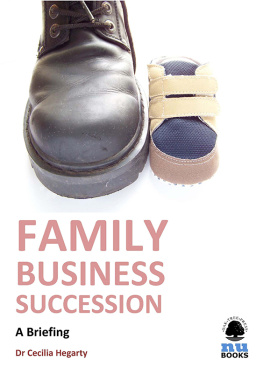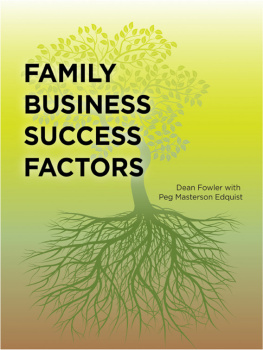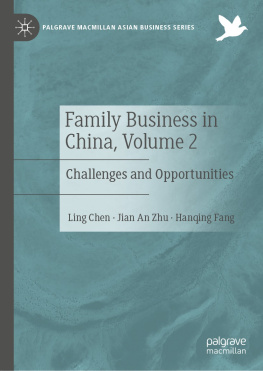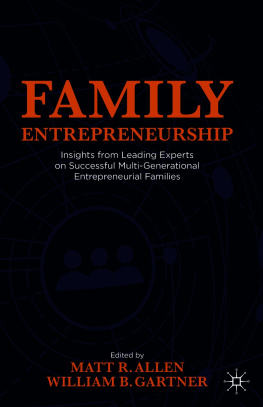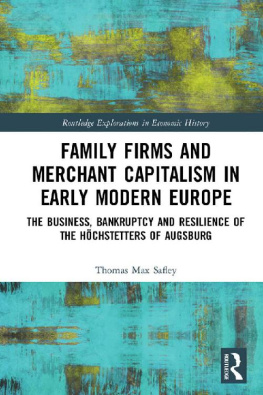Family business is a growing scholarly field that has recently seen calls to investigate different types of family businesses and connect more clearly with adjacent disciplines. We take up these challenges in this De Gruyter Handbook of Business Families by expanding our reach beyond the single-family with a single business. We investigate business families who may engage in joint entrepreneurial, investment, or philanthropic activities, identifying four overlapping research streams. The first is the family behind the firm, which explores the relatively neglected dynamics between individuals with family ties that shape the interaction between family and business. The second is business families with multiple businesses, which looks at a portfolio of activities jointly run by a family in space and time. We describe the third stream of research as governing the business family, which refers to how business families adopt formal rules and processes around their joint activities. Finally, we address the institutionalization of wealth and business families in society. This section explores the multi-generational business family as influenced by and influencing its broader socio-economic context. This handbook positions business families as a vibrant new research field with contributions straddling different disciplines and geographies.
Keywords: business families, kinship, business group, family firm governance, wealth,
Introduction
A growing community recognizes that family businesses play a significant role in most economies. In line with this, family business is a rapidly developing research area worldwide, situated within the broader management field. Family Business Review and the Journal of Family Business Strategy are recognized scholarly journals that serve this community, with both having seen their prestige and impact factor increase over the years (Families focuses on a relatively new construct within the family business field that has the potential for original theorizing and connections to other disciplines: business families.
The Origins of the Family Business Field
From the outset, family business scholars have recognized that management theories, often based on agency theory (). Scholars now recognize the considerable variety among family firms in their features and goals.
Thus, recent literature reviewers have called on family business scholars to reorient the field by incorporating insights from other disciplines to capture this variety ().
Opportunities for Original Theorizing through the Lens of Business Families
This handbook aims to expand on these emerging directions. To do so, we enlarge the fields boundaries by interrogating the implicit assumption of single firm-single family, characterizing much of the early research on family business (propose that extended families involved in multiple activities beyond a single firm are important phenomena that merit detailed investigation.
Business Families: Surveying a Multi-Thematic Landscape
Early family business research insisted that family businesses were unique and that existing management theories had little relevance for such firms (, p. 218) with scores of incompatible definitions applied to empirical studies. The pursuit of precision was perhaps unsuitable for a fuzzy and elastic phenomenon encompassing a range of businesses from the family farm to large multi-national enterprises. Nevertheless, the concern with definitions created a helpful vocabulary that advanced family businesses and raised the fields status by attracting the attention of mainstream organization scholars.
In Search of Definitions
Today the definition of family firms is most often captured in terms of the influence a family has over a firm, resulting from a combination of family ownership and family members involvement in the business (e.g., ). More fundamentally, though, defining family business in terms of ownership stakes and influence is problematic in two seemingly contradictory ways: the resulting definitions are too broad and overly narrow.
First, it is too broad because a very large proportion of both small and large firms would qualify as family firms. firms makes it hard to make meaningful claims regarding the commonalities between them as compared to other types of firms.
On the other hand, this definition is also overly narrow as it takes a single business as the unit of analysis. This definition excludes families who control multiple business units and one or more businesses in combination with other activities such as portfolio investing or philanthropy. Also excluded are extended entrepreneurial families where several family members independently control other businesses, which may be connected through resource or information sharing.
Consistent with emerging research about the heterogeneity of family firms, we acknowledge that not all family businesses are single legal entities and that families themselves are composed of multiple actors with diverse interests. We reason that the current definitions of family firms exclude important types of business families, providing scholars with an opportunity to extend the fields conceptual boundaries to accommodate the potential complexity of more loosely connected collectives of kinship ties and entrepreneurial activities. The generic term that has appeared in the family business literature is business families to capture this diverse phenomenon.
The Emergence of Business Families Research
A common view is that business families emerge late in the life cycle of a single business, when the legacy business no longer dictates family members interests. Over time, the single business focus is displaced by a broader view on what it means for an extended family to engage in shared or separate entrepreneurial activities ( observes that when a family firm is successful, the family often changes the way it perceives itself from a family business to a business family. In the latter case, family members shed their identities as nurturers and protectors of a single business. Instead, business family members derive their identity as developing multiple businesses.
Several streams of scholarship interested in the heterogeneous structures of family businesses now employ the term business families. Despite increasing recognition of the phenomenon of business families that transcend the single-business-single-family perspective, a standard business family definition has yet to emerge. Rather than striving for a universal definition, we argue it may be productive to survey the research themes scholars employ to study business families. To do so, we outline the contours of the business family landscape by classifying streams of research into four broad and sometimes overlapping themes.
First, some scholars argue that family business research has neglected the families behind the business. These scholars draw on adjacent disciplines such as family science (e.g., ). Indeed, some business families may be ruthless in limiting claims on family wealth by distant relatives while others are more inclusive, being perceived more fruitfully as clans or ethnic communities. Advocates of this approach argue that a business familys lens provides a better account of a business familys organizational governance practices.


